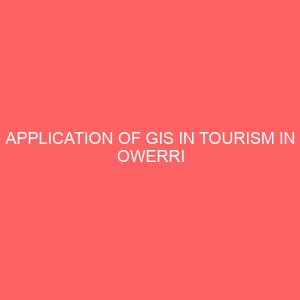Description
This research is on Route survey alignment design and volume computation of Saabo Eleke road from Oranyan junction to Olorunla village, Atiba local government area, Oyo state. In the world of engineering and environmental studies, surveying has been recognized as the inevitable operation been described as the bedrock of every meaningful development. The greater part of its responsibility is seen from the various types of surveying which are all geared toward promoting route ways, convenience, accessibility and spatial declination of both natural and social environment. In addition, surveying means the activities of planning, designing, constructions, development and rehabilitation of roads, depending on the survey data required by the surveyor.
Route surveying deals with road construction; it may be defined as the survey operation carried out in establishing the horizontal and vertical alignments of specified area of land needs for social utilities such as highways, railways, transmission lines, pipelines etc.
Route surveying is a major type of surveying under the broad engineering surveying which is one of the branches of surveying .Route survey is a large scale engineering survey carried out for the purpose of obtaining necessary data required by the engineers for planning, and design of any route such as highways, railways, canals and pipelines etc. This kind of information is obtained by the Surveyor for proper assessment of natural and manmade features as well as to provide information for vertical and horizontal alignment along the route for setting out routes and constructions. It requires surveyors with excellent experience in planning, designing and setting out for the construction works. For such projects, there is usually a need to closely study both topographical and cadastral map covering the project site in order to ascertain where the route design passes through to minimize cost and effects on route users.
Route surveying can also be applied when alignment is needed in expansion or rehabilitation of existing routes (roads) e.g. for traffic purpose. Increase in population explosion in the recent times has triggered the search for more route ways in the provision of the aforementioned as a whole has an impact in the healthy livelihood of man in his environment.
Historically, Survey is an old profession which originated from Egypt when lands were divided for taxation purpose (about 1400BC). The surveyors were called “rope stretchers” because of their occasional use of ropes in operation of measurements (Brinker Etal, 1997). However, the growth of surveying has amply been metamorphosed as a branch of applied geo-science which deals with the location of points on the earth surface, the graphical representation and visual presentation of such points.
The major stages involved in carrying out route surveying are:
- Reconnaissance survey: This is a rapid approximate survey carried out to examine the area through which the alignment line has to pass through the route. It also involves location of control points, planning for easy execution and establishing all traverse points along the proposed route.
- Investigation survey: This is the survey carried out initially in order to get the ground view or terrain configuration of the existing route to accomplish the tasks of the project. A third order traversing will be carried out along and at cross sections to the points established during the stage of recce, also topographic detailing and benchmarking will be carried out at this stage.
- Location survey: It involves actual planning and designing the proposed alignment of the route on paper and location of such designs on the ground. The proper location was done by drawing proposed centre line, the investigation survey plan taking into consideration all the features that characterized the road.
- Construction survey: This stage involves setting out horizontal curves using deflection angle method, staking out earthwork and structure preparatory for grading and construction.
It was discovered that an untarred existing route running from Oranyan junction in Afijio Local Government Area of Oyo state through Olorunla community village was:
- Greatly affected by flood and erosion and this has truly misconfigured this road network and has made the road unbearable for car owners to ply the road with ease.
- There has been serious traffic congestion occurring everyday along the route due to the tiny existing road.
- As for the farmers conveying farm produce like Cassava, Banana and other subsistence crops from the farm to the town has been finding so difficult to convey those crops with ease on the road.
Therefore, for these mentioned reasons, there is need for this project in order to construct a fine leveled road with expansion.
1.3 AIM AND OBJECTIVES OF THE PROJECT
The aim of this project is to provide the longitudinal and cross-section information of the route which will serve as the information to be used for volume calculation and designing of the road.
1.3.2 OBJECTIVES OF THE PROJECT
In order to achieve the aim mentioned above, the below objectives were followed;
- Data acquisition.
- Data processing which involves processing all the acquired data to obtain the required information for the design.
- Analysis of result.
- Information presentation.
- Report write up.
The specifications for the project are as follow:
- It should be third order engineering survey with linear accuracy of not less than 1:5,000
- The cross section width should not be less than 20 meters
- Controls extension should be carried out at every 1.0 kilometers
- Locational data should be taken at every 30 meters chainage and at 5 meters and 10 meters cross sections on both sides of the center line.
Route survey, a branch of survey that spans a long distance is essential for the acquisition of necessary data that would be required for the construction of road at the project area, it provide a 3D data that can be used for generating of profile, cross section and for volume computation of the cut and fill. However, proper care has to be taken so as to ensure the safety of vehicles that will ply the route. It will also provide solution to the problems stated below:
- To reduce the time of travel between the villages.
- To help in the transportation of local agricultural products to nearby markets
- To facilitate the poultry and fishery farms of the area by ensuring good transportation of farm product.
- To facilitate access to the raw materials
- To speed up the development rate of the area.
The scope of the project entails the following:
- Reconnaissance stage (Office planning and Field reconnaissance)
- Data search, which include imagery downloading, sourcing for coordinates as well as equipment to be used.
- Chainage marking along the center of the route (30m interval)
- Testing of Instruments to verify their working condition
- Establishment and In-situ Checking of Controls to be used for correction.
- Control & Traverse Stations selection
- Data acquisition stage
- Geometric Data Acquisition (X,Y,Z, coordinates) along the route using Leica TS02 & Sokkia S608TK Total Stations at interval of 30m for profile points, Cross sectional points as well as fixing all details along the route
- Attribute data acquisition through oral interview and social survey
- Data processing stage
- Downloading of acquired geometric data using Sokkia link and Leica geo office softwares for total station downloading and CHC downloader software for CHC differential GPS.
- Processing of the downloaded data using Hi-Target Geomatics Office for CHC data.
- Plotting and design of the downloaded data and volume computation of cuts and fills for each section using AutoCAD Civil 3D companion 2009.
- Production of existing and designed plans for Horizontal and Vertical alignments using appropriate scales in both soft and hard copies.
- Project report writing using Microsoft word software.








David Green –
Was impressed with the quality of the research work
Brilliantng –
We strive to get the best out to students at very low cost. Thanks for your review